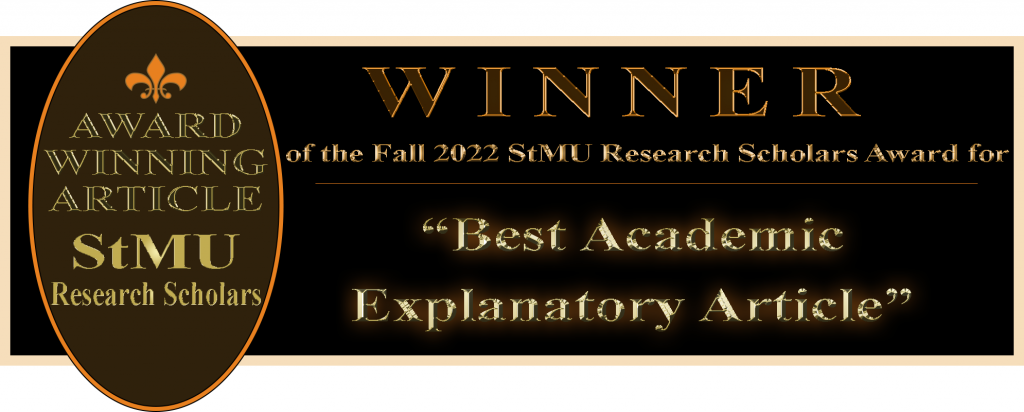
With the popularization of true crime in the media, it is a common misconception that crimes can be solved within minutes using partial evidence, such as fingerprints. In reality, the science behind solving crimes is far more complex than analyzing a drop of blood or a shard of broken glass. Although fingerprint analysis is a widely recognized method, thanks to “The CSI Effect”1 the true gold standard of evidence in forensics lies in our genetic makeup.2 Since the 1980s, the use of DNA as evidence has helped to provide answers to some of the most challenging cases in the field. With the help of forensic geneticists, DNA found at a crime scene is collected and analyzed with the aim to link suspects or victims to biological material like saliva or blood.
However, because our DNA contains highly sensitive information that is unique to us, various ethical concerns are raised within the field of forensic genetics. For instance, many individuals are apprehensive about the accessibility law enforcement officials have over genetic information given that it is considered to be a violation of genetic privacy. Additionally, regardless of DNA evidence’s success in the criminal justice system, it is argued that its recency in forensics has led to a lack of standardization both in the laboratory and in the court of law. Among these, the concerns surrounding the application of genetics in forensics have only increased due to the widespread acceptance of its use as evidence.
History of Forensic Science
Forensic science can be defined as the application of physical/natural sciences to both criminal and civil laws.3 Within the field exist many subdisciplines that can be applied to the criminal justice system such as forensic toxicology, forensic medicine, and forensic osteology. The research contributed by each is then applied to legal evidence in the form of an expert witness or where then the court can provide the appropriate ruling based on the scientific data presented.4
The application of forensics can be traced back to 700 A.D. when the earliest practices included identification by fingerprints.5 In present-day forensics, advancements in science and technology, like The Human Genome Project, have led to an increase in innovations in biology-based disciplines specifically in forensic genetics. Although the structure of deoxyribonucleic acid (DNA) and its genetic components have been continuously studied since its discovery in the 19th century, its use in forensics is relatively new.6 In fact, the use of DNA as evidence was not recognized in the field until the late 1980s when forensic pioneer, Alec Jefferys, first introduced the concept known as DNA fingerprinting.7 Soon after his groundbreaking discovery, additional identification methods of DNA evidence such as Multiplex PCR, Restriction Fragmentation Length Polymorphism (RFLP), and Short Tandem Repeat (STR), became standard in forensic genetics.8
DNA in Forensic Science
DNA Fingerprinting, as defined by Jefferys, is the method of creating a unique profile that contains individualized genome regions that are derived from the biological matter at a crime such as tissue, blood, hair, or semen. Subsequently, the profile, which consists of specific genetic markers or identifiers, is matched to database references that have a high probability of having cogent similarities in their profiles.9
To further understand what is meant by this, we must first have a general understanding of genetics and DNA. In our body, each cell contains a copy of our entire genome that is comprised of highly compact DNA or chromosomes.10 Within the chromosomes lay regions called genes that hold genetic variations of instructions or code. These arrangements map out basic human traits such as eye color or height. The variations found in our DNA are made possible by the combination of basic complementary units located in the structure and are denoted by four letters called base pairs. The bases, adenine (A) and thymine (T) pair together leaving guanine (G), and cytosine (C) to pair, ultimately composing the structure that we know as DNA.11 Given that because humans are made up of the same genetic patterns of base pairs, we, as a result, share around 99 percent of our genetic code with the rest of the world.12 Ultimately, this brings us to question Jeffery’s findings – How can forensic geneticists isolate perpetrators and victims from a population when the human genome contains only one-one hundredths of unique DNA?
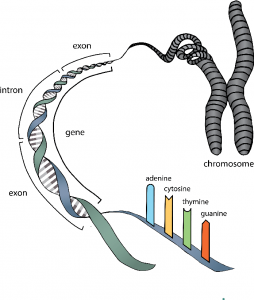
The answer is microsatellite DNA, otherwise known as standard tandem repeats or STRs.13 Microsatellite DNA is a series of repeating sequences of base pairs that are mostly found in areas that do not code for aforementioned traits. These are referred to as non-coding regions. STRs are found interspaced along genes every 2,000 base pairs and are rich in adenine that can manifest in various lengths and frequencies that give to the uniqueness of each human genome.14
Overall, STRs are considered the gold standard in genetic forensics because it is frequently identified in individual genomes and makes up one percent of differentiation among populations resulting in the coupled use with DNA Fingerprinting.
Storage of DNA Evidence
Although the use of DNA Fingerprinting and STRs testing is highly regarded in forensics15 it must be taken into consideration that, within this method, there exists a considerable downfall. If there is an absence of highly matching DNA Fingerprint profiles in the genetic database, this limits the opportunity in which a forensic geneticist can link unknown DNA to a suspect or victim.
To help alleviate this issue, the Federal Bureau of Investigation (FBI) established a national genetic database in 1998 named The Combined DNA Index System (CODIS).16 In order to provide forensic geneticists in the U.S. with complete and inclusive profiles, the database stores DNA that has been collected from crime scenes, sexual assault kits, and arrestees.17 Despite CODIS’ success at statistically predicting a match between individuals, many speculate that its methodology infringes on individuals’ rights, ultimately bringing into question the ethical concerns of DNA storage.
The right to genetic privacy is addressed for many reasons the first being that within CODIS, complete genomes are stored.18 The disclosure of history of disease, gene function, or biological relatives could therefore strip an individual of their right to genetic privacy.19 Although CODIS only benefits from comparing STR sequences found in specific locations or loci of stored DNA20 the threat of genome accessibility exists, nonetheless. This is especially true when considering the following statement provided by the US Presidential Commission for the Study of Bioethical Issues in 2012, “…[o]nly in exceptional circumstances should entities such as law enforcement or defense and security have access to biospecimens or whole genome sequence data for non-health-related purposes without consent”.21
Another ethical concern of CODIS involves the violation of the protection of an individual against unreasonable searches, otherwise known as the 4th amendment. This is a frequent topic of debate in forensic genetics with the reason being that a proportion of the genetic profiles established in CODIS are not linked to individuals with a criminal offense. In other words, arrestees, or those who have not been charged with a crime, are entitled to practice their constitutional rights and are to be considered innocent until proven guilty.22 Nevertheless, because DNA profiles within the database are subject to frequent searches23, this in turn can be considered unreasonable search and seizure which is an infraction of the 4th amendment.24
Collection of DNA Evidence
The violation of rights is not limited to genetic storage in CODIS; it also extends so far that the protocols and methods used to collect DNA in forensic genetics are also considered to be of ethical concern. As previously mentioned, genetic information can be collected from various sources such as from arrestees and crime scenes with the purpose of creating and linking DNA Fingerprints. An additional source that is not frequently taken into consideration is waste or abandoned DNA. This type of DNA is not collected from the aforementioned sources. Rather, waste DNA is categorized as genetic material that is found typically on cigarette butts, chewing gum, or straws.25 Although this collection method is not considered a violation of the 4th amendment, it leads us to question the circumstances. Will the use of genetic information be permitted to be valued higher than individual privacy?
Use of DNA Evidence
Once DNA has been collected and stored; it can finally be utilized by law enforcement to trace potential matches located within CODIS and other databases. Since introducing CODIS, the FBI has made an effort to reduce the ethical concerns of DNA storage by establishing standards regarding the use of genomes for identification. Instead of utilizing the whole genome found in DNA profiles, the FBI reports that only 13 STR loci are used for statistical analysis.26 It must be noted that when CODIS profiles are compared, it does not indicate that an exact match is produced. Rather, the suspects are significantly narrowed down until a highly probable match is found. For example, when attempting to link two unrelated Caucasian individuals, the probability of this association is 1 in 575 trillion.27 This demonstrates the power DNA evidence, specifically STR analysis, holds in forensic science when a profile is present in CODIS.
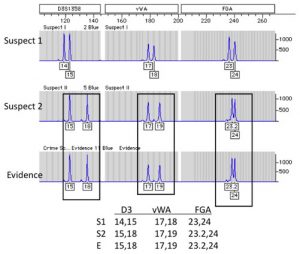
Because STR matches depend on the presence of profiles in a database, how can forensics trace individuals when a profile cannot be located in CODIS? The case of The Golden State Killer answers this while highlighting other ethical concerns of forensic genetics. From the early 1970s, up until the late 1980s, there had been several reports of murders and rapes along the coast of California.28 Because these crimes took place years before Alec Jeffery’s research, investigators could not turn to forensic genetics to identify the individuals who could have been responsible for the brutal crimes. As a result, the investigative leads dwindled, leaving the case of The Golden State Killer to grow cold for the next 40 years. In 2018, investigators attempted to utilize forensic genetics to link the DNA found at the crime scenes to various profiles. Despite this effort, no matches were found on the FBI database and geneticists resorted to the latest method of forensic genetics called forensic genealogy.
Forensic genealogy uses DNA sourced from crime scenes to match profiles on genealogy websites like Ancestry and 23andMe.29 Unlike forensic genetics, rather than utilizing STRs, forensic genealogy uses another genetic marker called Single Nucleotide Polymorphisms (SNPs).30 This method is similar to the concept of STRs in that SNPs make up the variation of our genome; however, instead of variations that arise from repeated DNA sequences, SNPs are variations of single positions of base pairs. This type of linkage is made possible by the principle of heredity, where genome analysis has the ability to reveal paternal and maternal familial relationships based on the amount of DNA that is shared between individuals.31 Using this, investigators were able to produce a partial familial match through the application of the genealogy website GEDMatch. At this point, forensic genealogists and law enforcement officials were able to create a pedigree displaying the origin of the partial match which belonged to the suspect’s 4th cousin. Finally, after four challenging months of the genealogical investigation, police were able to link the crime to two males, one of them being Joseph James DeAngelo. Of the two men, investigators placed DeAngelo under surveillance and eventually traced him to the crimes using waste DNA collected from a discarded tissue.32 However, because DeAngelo had not disclosed his genetic information to genealogy websites and was instead convicted using familial linkage, this prominent case introduced additional concerns regarding the ethics of using DNA evidence.
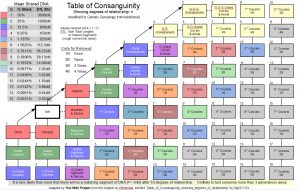
Based on this case study, it is safe to acknowledge that there are significant advantages to utilizing DNA as evidence. Nonetheless, the ethics surrounding the use of familial genealogy websites by forensic genealogists and law enforcement are highly taken into consideration.
Through the application of genetics and the use of DNA evidence, many cases that were once considered impossible to solve can now be investigated once more with the hopes of determining a suspect. Regardless of the success and universal acceptance of STR and SNP analysis in forensic genetics, many ethical concerns still prevail. Though it is argued that the recency of this forensic discipline has led to the lack of legislation regarding genomic privacy, individuals should nonetheless be free to exercise the right to protection of fundamental rights. In addition to this argument, it is because the field of forensic genetics is continuously evolving that future considerations should be acted upon by the government. Some considerations include the implementation of strict CODIS policies by the FBI in regard to DNA storage of individuals who have not been convicted. Nonetheless, due to the sensitivity of our genetic information, the ethical implications of DNA collection, storage, and use in genetic forensics may always remain controversial.
- McManus, Sarah E. “Influence of the CSI Effect on Education and Mass Media.” Thesis, University of Central Florida, 2010.
- Lynch, Michael. “God’s Signature: DNA Profiling, the New Gold Standard in Forensic Science.” Endeavour 27, no. 2 (2003): 93–97. https://doi.org/10.1016/s0160-9327(03)00068-1.
- van Asten, Arian C. “On the Added Value of Forensic Science and Grand Innovation Challenges for the Forensic Community.” Science & Justice 54, no. 2 (March 2014): 170–79. https://doi.org/10.1016/j.scijus.2013.09.003.
- Hiss, Jehuda, Maya Freund, and Tzipi Kahana. “The Forensic Expert Witness—an Issue of Competency.” Forensic Science International 168, no. 2-3 (May 24, 2007): 89–94. https://doi.org/10.1016/j.forsciint.2006.06.004.
- Leone, Massimo. “From Fingers to Faces: Visual Semiotics and Digital Forensics.” International Journal for the Semiotics of Law – Revue internationale de Sémiotique juridique 34, no. 2 (2020): 579–99. https://doi.org/10.1007/s11196-020-09766-x.
- Gayon, Jean. “From Mendel to Epigenetics: History of Genetics.” Comptes Rendus Biologies 339, no. 7-8 (2016): 225–30. https://doi.org/10.1016/j.crvi.2016.05.009.
- Jeffreys, A. J., V. Wilson, and S. L. Thein. “Individual-Specific ‘Fingerprints’ of Human DNA.” Nature 316, no. 6023 (1985): 76–79. https://doi.org/10.1038/316076a0.
- Schanfield, Moses. “Applications of Molecular Genetics to Forensic Sciences.” Anthropological Genetics, 2006, 235–76. https://doi.org/10.1017/cbo9781139167222.010.
- Jeffreys, A. J., V. Wilson, and S. L. Thein. “Individual-Specific ‘Fingerprints’ of Human DNA.” Nature 316, no. 6023 (1985): 76–79. https://doi.org/10.1038/316076a0.
- National Research Council. “Genetic and Molecular Basis of DNA Typing.” Essay. In The Evaluation of Forensic DNA Evidence, 60–75. Washington D.C: National Academies Press, 1996. https://nap.nationalacademies.org/catalog/5141/the-evaluation-of-forensic-dna-evidence.
- Kryachko, Eugene S., and Sergey N. Volkov. “Preopening of the DNA Base Pairs.” International Journal of Quantum Chemistry 82, no. 4 (2001): 193–204. https://doi.org/10.1002/qua.1040.
- Richard Boland, C. “Non-Coding RNA: It’s Not Junk.” Digestive Diseases and Sciences 62, no. 5 (2017): 1107–9. https://doi.org/10.1007/s10620-017-4506-1.
- Wyner, Nicole, Mark Barash, and Dennis McNevin. “Forensic Autosomal Short Tandem Repeats and Their Potential Association with Phenotype.” Frontiers in Genetics 11 (2020). https://doi.org/10.3389/fgene.2020.00884.
- Wyner, Nicole, Mark Barash, and Dennis McNevin. “Forensic Autosomal Short Tandem Repeats and Their Potential Association with Phenotype.” Frontiers in Genetics 11 (2020). https://doi.org/10.3389/fgene.2020.00884.
- Lynch, Michael. “God’s Signature: DNA Profiling, the New Gold Standard in Forensic Science.” Endeavour 27, no. 2 (2003): 93–97. https://doi.org/10.1016/s0160-9327(03)00068-1.
- Lynch, Michael. “God’s Signature: DNA Profiling, the New Gold Standard in Forensic Science.” Endeavour 27, no. 2 (2003): 93–97. https://doi.org/10.1016/s0160-9327(03)00068-1.
- Lynch, Michael. “God’s Signature: DNA Profiling, the New Gold Standard in Forensic Science.” Endeavour 27, no. 2 (2003): 93–97. https://doi.org/10.1016/s0160-9327(03)00068-1.
- Wallace, H.M., A.R. Jackson, J. Gruber, and A.D. Thibedeau. “Forensic DNA Databases–Ethical and Legal Standards: A Global Review.” Egyptian Journal of Forensic Sciences 4, no. 3 (2014): 57–63. https://doi.org/10.1016/j.ejfs.2014.04.002.
- Grogan, L. (2019). Ethical Implications of Codis (thesis). ScholarWorks@GSVU. Retrieved October 2022, from https://scholarworks.gvsu.edu/theses/946/?utm_source=scholarworks.gvsu.edu%2Ftheses%2F946&utm_medium=PDF&utm_campaign=PDFCoverPages.
- Wallace, H.M., A.R. Jackson, J. Gruber, and A.D. Thibedeau. “Forensic DNA Databases–Ethical and Legal Standards: A Global Review.” Egyptian Journal of Forensic Sciences 4, no. 3 (2014): 57–63. https://doi.org/10.1016/j.ejfs.2014.04.002.
- Hiss, Jehuda, Maya Freund, and Tzipi Kahana. “The Forensic Expert Witness—an Issue of Competency.” Forensic Science International 168, no. 2-3 (May 24, 2007): 89–94. https://doi.org/10.1016/j.forsciint.2006.06.004.
- Wallace, H.M., A.R. Jackson, J. Gruber, and A.D. Thibedeau. “Forensic DNA Databases–Ethical and Legal Standards: A Global Review.” Egyptian Journal of Forensic Sciences 4, no. 3 (2014): 57–63. https://doi.org/10.1016/j.ejfs.2014.04.002.
- Wallace, H.M., A.R. Jackson, J. Gruber, and A.D. Thibedeau. “Forensic DNA Databases–Ethical and Legal Standards: A Global Review.” Egyptian Journal of Forensic Sciences 4, no. 3 (2014): 57–63. https://doi.org/10.1016/j.ejfs.2014.04.002.
- Lowenberg, Kelly. “Applying the Fourth Amendment When DNA Collected for One Purpose Is Tested for Another.” University of Cincinnati College of Law Scholarship and Publication, 2011. http://scholarship.law.uc.edu/uclr/vol79/iss4/1.
- Palmour, Nicole. “Forensic Applications of Molecular Genetics: Ethics and Law to Inform Public Policy Issues.” EScholarship@McGil, 2019. https://escholarship.mcgill.ca/concern/theses/7p88ch490.
- Norrgard, Karen. “Forensics, DNA Fingerprinting, and CODIS.” Nature Education 1, no. 1 (2008): 35 https://www.nature.com/scitable/topicpage/forensics-dna-fingerprinting-and-codis-736/.
- Reilly, Phil. “Legal and Public Policy Issues in DNA Forensics.” Nature Reviews Genetics 2, no. 4 (2001): 313–317. https://doi.org/10.1038/35066091.
- Wickenheiser, Ray A. “Forensic Genealogy, Bioethics and the Golden State Killer Case.” Forensic Science International: Synergy 1 (2019): 114–25. https://doi.org/10.1016/j.fsisyn.2019.07.003.
- Wickenheiser, Ray A. “Forensic Genealogy, Bioethics and the Golden State Killer Case.” Forensic Science International: Synergy 1 (2019): 114–25. https://doi.org/10.1016/j.fsisyn.2019.07.003.
- Lynch, Michael. “God’s Signature: DNA Profiling, the New Gold Standard in Forensic Science.” Endeavour 27, no. 2 (2003): 93–97. https://doi.org/10.1016/s0160-9327(03)00068-1.
- Kling, Daniel, Christopher Phillips, Debbie Kennett, and Andreas Tillmar. “Investigative Genetic Genealogy: Current Methods, Knowledge and Practice.” Forensic Science International: Genetics 52 (May 2021): 102474. https://doi.org/10.1016/j.fsigen.2021.102474.
- Syndercombe Court, Denise. “Forensic Genealogy: Some Serious Concerns.” Forensic Science International: Genetics 36 (2018): 203–4. https://doi.org/10.1016/j.fsigen.2018.07.011.
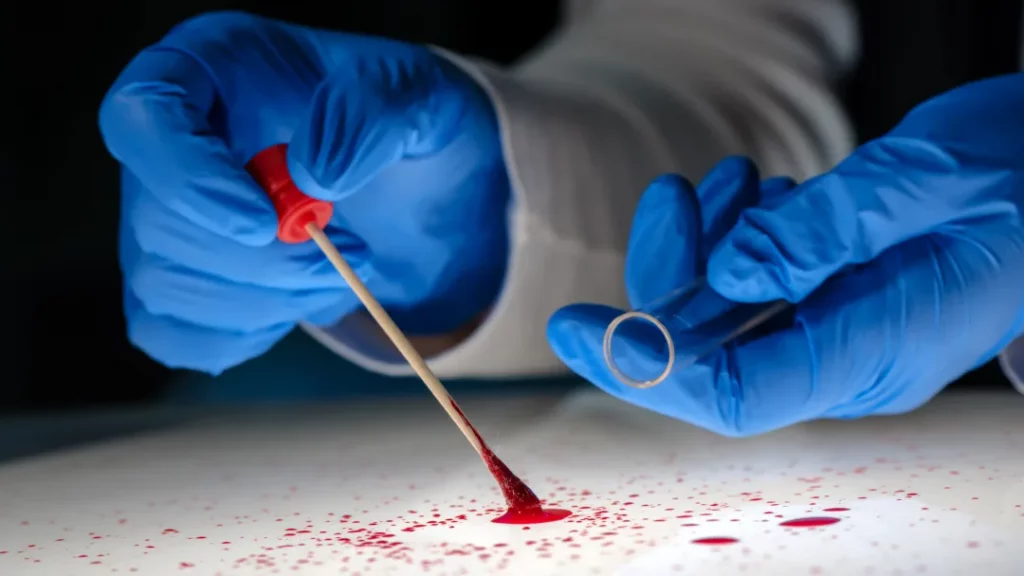



29 comments
jvillarreal68
Hi Alina! Your article on DNA evidence and its impact on forensic science is very captivating. As a forensic science major I enjoyed reading the history of the DNA and the background information of the “CSI effect.” The information you provided and the Golden State Killer case study also piqued my curiosity. In summary, the essay is really interesting and well-written. Congratulations on your awards for the piece you wrote.
Xavier Bohorquez
Congratulations on your award for the article! I really enjoyed your article and how interesting and well-informed the data was. I was always interested in the field of forensic science and something as interesting as your article just made me more involved in the field. the mention of the DNA being used as evidence was not used until the 1980’s was something so eventful to forensic science to this day.
Michaell Alonzo
Hello, Alina Thank you for your two award-winning articles. Your essay was pretty interesting to read. It’s intriguing how forensics are utilized at crime scenes to find evidence. My interest in forensic science has grown as a result of your article. Your paper does a great job of articulating the significance of DNA in forensic science and how it has developed over time.
Marissa Rendon
First off congratulations on your publication! This was an excellent formed out article and I truly enjoyed reading this. Dna is truly a big part in forensic science. I have always felt so odd and weirded out about sharing dna. Especially since nowadays it is very easy to print someone’s fingerprints on to a crime scene over all this article was truly intriguing to read and I enjoyed this read!
Abbey Stiffler
To start, congrats on being nominated for two awards. I would have loved to study criminology in another life if I could handle all that. Fingerprints being used in 700 AD seesaw crazy to me as that is so far back in history. I have not lived in a world 3whee DNA was not used to solve crimes so I cannot even imagine not having DNA to solve with.
Jared Sherer
Forensic science has a big impact in the world of criminology. The victims that have to live with the sad truth of horrible cases such as sexual assault, and murders do have a way of justice with the help of forensic science. The author does a great job explaining the fine detail of genetic privacy and the wrongs and rights of how DNA could be distributed in a case without affecting the 4th amendment. The article explains that DNA collecting is not just fingerprints, hair strands or semen, but could also be found in private databases like Ancestry or 23andMe. As unique and a single DNA strand is, forensic science helps with the more fine print of evidence that is used everyday and has helped thousands of cases around the world. The double edged sword pits the need to convict criminals against peoples’ right to genetic privacy. The author does an excellent job in handling this complex subject, first with general information and then methodically narrowing the focus to the criminal being convicted, while protecting individual and constitutional rights.
Priscilla Vargas
Zitlali, congratulations on your nomination. It is well deserved. This article is a hot topic for me. I enjoy watching true crime, unsolved mysteries and the like. I am by no means a conspiracy theorist; however, I have always said I would never submit any of my dna (for example, a cheek swab) to a genealogy site like ancestry or 23andme, because I’d hate to end up arrested for a crime I did not commit, yet my conviction would be based on dna that was acquired through such a site, lol. All joking aside, I do believe this to be a very controversial topic because ultimately, peoples rights of privacy are important, but I have peace knowing there is a provable way to get the bad guy (or girl). Great information and good luck.
Jose Luis Gamez, III
I really enjoyed reading your article. It’s fascinating how forensics is used to uncover hidden evidence with regards to crime scenes. Congratulations on your nomination!
Zitlali Aguirre
DNA is such a big part of forensic science and your article really articulated its importance and how it has grown throughout the years. I am a forensic science major and I have always found the power of DNA fascinating! I loved the example of the two suspects and the DNA evidence that was found. It shows how powerful one piece of evidence can do to solve a case. Congratulations on your nomination!
Samantha Bonillas
Congratulations on your nomination! I really enjoyed your article and how interesting and well researched it is. I have always found forensic science interesting and your article just made me more interested. Something that stood out to me was how you mentioned that DNA being used as evidence was not used until the 1980’s.